Commemorative stamps, postage stamps issued to honour or commemorate a place, event or person, have been released by Great Britain since 1924. Several sets were released during the decade of the 1990s.
Postage stamps were first used in Great Britain on 6 May 1840, with the introduction of the world's first adhesive postage stamp, the Penny Black. Up until 1924, all British stamps depicted only the portrait of the reigning monarch, with the exception of the 'High Value' stamps, the so-called "Sea Horses" design issued in 1913, which were twice the size of normal stamps with added pictorial design.
In 1924, the first 'Commemorative' stamp was issued for the British Empire Exhibition. There were then occasional issues over the next thirty years, when the frequency of new issues became more regular. From the mid-sixties, in most years, six to nine sets of commemorative stamps have been issued every year. PHQ Cards, postcard sized reproductions of commemorative stamps, have also been issued to accompany every new set of stamps since the mid-seventies.
| Issue Date | Issue details | Stamps in set | Designer(s) |
|---|---|---|---|
| 1990 | |||
| 23 January 1990 | 150th Anniversary of Royal Society for Prevention of Cruelty to Animals | Four | |
| 6 February 1990 | Greetings Stamps "Smiles" | Ten | |
| 6 March 1990 | Europa & Glasgow 1990, European City of Culture | Four | |
| 10 April 1990 | 25th Anniversary of Queen's Award for Export & Technology | Two | |
| 3 May 1990 | "Stamp World 90" International Stamp Exhibition, (Miniature Sheet) | One (MS) | |
| 5 June 1990 | 150th Anniversary of Kew Gardens | Four | |
| 10 July 1990 | 150th Birth anniversary of Thomas Hardy (Author) | One | |
| 2 August 1990 | 90th Birthday of Queen Elizabeth The Queen Mother | Four | |
| 11 September 1990 | Gallantry Awards | Five | |
| 16 October 1990 | Astronomy | Four | J. Fisher [1] |
| 13 November 1990 | Christmas | Five | |
| 1991 | |||
| 8 January 1991 | Dogs – Paintings by George Stubbs | Five | |
| 5 February 1991 | Greetings Stamps "Good Luck" | Ten | |
| 5 March 1991 | Scientific Achievements | Four: Charles Babbage (computing), Michael Faraday (electricity), Frank Whittle (jet engine), Robert Watson-Watt (radar). [2] | J Harwood [3] |
| 26 March 1991 | Greetings Stamps "Smiles", same set as issued 06/02/90 reprinted, inscribed "1st" instead of "20p" | Ten | |
| 23 April 1991 | Europa, Europe in Space | Four | |
| 11 June 1991 | World Student Games, Sheffield (22p, 26p & 31p) & Rugby World Cup, London (37p) | Four | |
| 16 July 1991 | 9th World Congress of Roses, Belfast | Five | |
| 20 August 1991 | 150th Anniversary of Dinosaur's Identification by Owen | Five | Bryan Kneale |
| 17 September 1991 | Bicentenary of Ordnance Survey. Maps of Ham Street, Kent | Four | Howard Brown [4] |
| 12 November 1991 | Christmas | Five | |
| 1992 | |||
| 14 January 1992 | Wintertime | Five | |
| 28 January 1992 | Greetings Stamps "Memories" | Ten | |
| 6 February 1992 | 40th Anniversary of Accession | Five | |
| 10 March 1992 | Death Centenary of Alfred, Lord Tennyson | Four | |
| 7 April 1992 | Europa, International Events | Five | |
| 16 June 1992 | 350th Anniversary of the Civil War | Four | |
| 21 July 1992 | 150th Anniversary of Sir Arthur Sullivan | Five | |
| 15 September 1992 | Protection of the Environment, Children's Paintings | Four | |
| 13 October 1992 | Single European Market | One | |
| 10 November 1992 | Christmas | Five | |
| 1993 | |||
| 19 January 1993 | 600th Anniversary of Abbotsbury Swannery | Five | David Gentleman [5] |
| 2 February 1993 | Greetings Stamps " Gift Giving" | Ten | |
| 16 February 1993 | 300th Anniversary of John Harrison, inventor of the marine chronometer | Four | |
| 2 March 1993 | £10 Definitive | One | |
| 16 March 1993 | 14th World Orchid Conference, Glasgow | Five | |
| 11 May 1993 | Europa, Contemporary Art | Four | |
| 15 June 1993 | Roman Britain | Four | |
| 20 July 1993 | Inland Waterways | Four | |
| 14 September 1993 | The Four Seasons, Autumn | Five | |
| 12 October 1993 | Sherlock Holmes | Five | Andrew Davidson [6] |
| 9 November 1993 | Christmas | Five | |
| 1994 | |||
| 18 January 1994 | The Age of Steam | Five | |
| 1 February 1994 | Greetings Stamps "Messages" | Ten | |
| 1 March 1994 | 25th Anniversary of Investiture of the Prince of Wales Paintings by Prince Charles | Five | |
| 12 April 1994 | Centenary of Picture Postcards | Four | |
| 3 May 1994 | Opening of Channel Tunnel (Joint issue with La Poste) | Four | |
| 6 June 1994 | 50th anniversary of D-Day | Five | K Bassford [7] |
| 5 July 1994 | Scottish Golf Courses | Five | |
| 2 August 1994 | The Four Seasons, Summertime | Five | |
| 27 September 1994 | Europa, Medical Discoveries | Four | |
| 1 November 1994 | Christmas | Five | |
| 1995 | |||
| 17 January 1995 | Cats | Five | |
| 14 March 1995 | Springtime | Five | |
| 21 March 1995 | Greetings Stamps 'Greetings in Art' | Ten | |
| 11 April 1995 | Centenary of the National Trust | Five | |
| 2 May 1995 | Europa, Peace & Freedom | Five | |
| 6 June 1995 | Science Fiction, Novels by H. G. Wells | Four | |
| 8 August 1995 | Reconstruction of Shakespeare's Globe Theatre | Five | |
| 5 September 1995 | Pioneers of Communication | Four | |
| 3 October 1995 | Centenary of Rugby league | Five | |
| 30 October 1995 | Christmas | Five | |
| 1996 | |||
| 25 January 1996 | Death Bicentenary of Robert Burns | Four | |
| 25 February 1996 | Greetings Stamps, Cartoons | Ten | |
| 12 March 1996 | 50th Anniversary of Wildfowl & Wetlands Trust | Five | |
| 16 April 1996 | Centenary of Cinema | Five | |
| 14 May 1996 | European Football Championship | Five | H. Brown [8] |
| 9 July 1996 | Olympic & Paralympic Games, Atlanta | Five | |
| 6 August 1996 | Europa, Famous Women | Five | |
| 3 September 1996 | 50th Anniversary oc Children's Television | Five | |
| 1 October 1996 | Classic Sports Cars | Five | |
| 28 October 1996 | Christmas | Five | |
| 1997 | |||
| 6 January 1997 | Greetings Stamps, 19th century Flower Paintings | Ten | |
| 21 January 1997 | 450th Death Anniversary of King Henry VIII | Seven | |
| 11 March 1997 | Religious Anniversaries | Four | |
| 21 April 1997 | Royal Golden Wedding Gold Definitives, 26p & 1st values | Two | |
| 13 May 1997 | Europa, Horror Stories | Four | |
| 10 June 1997 | British Aircraft Designers | Five | Turner Duckworth [9] |
| 8 July 1997 | "All the Queen's Horses", 50th Anniversary of the British Horse Society | Four | |
| 12 August 1997 | Sub-Post Offices | Four | |
| 9 September 1997 | Birth Centenary of Enid Blyton | Five | |
| 27 October 1997 | Christmas, 150th Anniversary of the Christmas Cracker | Five | |
| 13 November 1997 | Royal Golden Wedding | Four | |
| 1998 | |||
| 20 January 1998 | Endangered Species | Six | Robert Maude [10] |
| 3 February 1998 | Diana, Princess of Wales Commemoration | Five | |
| 24 February 1998 | The Queen's Beasts (650th Anniversary of the Order of the Garter) | Five | Jeffrey Matthews FSCD [11] |
| 24 March 1998 | Lighthouses | Five | Dick Davis [12] |
| 23 April 1998 | Comedians | Five | Gerald Scarfe [13] |
| 23 June 1998 | Health (50 Years of the NHS) | Four | Vince Frost [14] |
| 21 July 1998 | Magical Worlds (Classic Fantasy Books for Children) | Five | Peter Malone [15] |
| 25 August 1998 | Europa. Carnival (Notting Hill Carnival) | Four | Tim Hazael [16] |
| 29 September 1998 | Speed (Great British Land Speed Records) | Five | Roundel [17] |
| 2 November 1998 | Christmas (Angels) | Five | Irene von Treskow [18] |
| 1999 | |||
| 12 January 1999 | The Millennium Series. The Inventor's Tale | Four | David Gentleman [5] |
| 2 February 1999 | The Millennium Series. The Traveller's Tale | Four | |
| 2 March 1999 | The Millennium Series. The Patient's Tale | Four | |
| 6 April 1999 | The Millennium Series. The Settler's Tale | Four | |
| 4 May 1999 | The Millennium Series. The Worker's Tale | Four | |
| 1 June 1999 | The Millennium Series. The Entertainer's Tale | Four | |
| 15 June 1999 | The Wedding of Prince Edward and Sophie Rhys-Jones | Two | John Swannell [19] |
| 6 July 1999 | The Millennium Series. The Citizen's Tale | Four | |
| 3 August 1999 | The Millennium Series. The Scientist's Tale | Four | |
| 11 August 1999 | Solar Eclipse | ||
| 7 September 1999 | The Millennium Series. The Farmer's Tale | Four | |
| 21 September 1999 | World Changers | Charles Darwin, Edward Jenner, Michael Faraday and Alan Turing. [20] | |
| 5 October 1999 | The Millennium Series. The Soldier's Tale | Four | |
| 2 November 1999 | The Millennium Series. The Christian's Tale | Four | Clare Melinsky [21] |
| 7 December 1999 | The Millennium Series. The Artist's Tale | Four | |
| 14 December 1999 | The Millennium Series. Millennium Timekeeper | One | David Gentleman [5] |
Notes
Sources
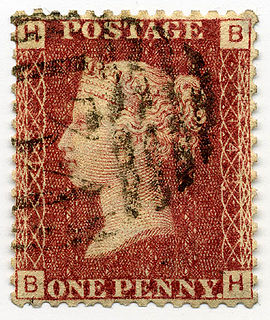
Philately is the study of postage stamps and postal history. It also refers to the collection, appreciation and research activities on stamps and other philatelic products. Philately involves more than just stamp collecting or the study of postage; it is possible to be a philatelist without owning any stamps. For instance, the stamps being studied may be very rare or reside only in museums.
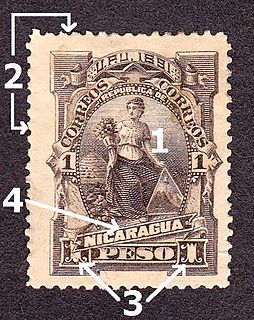
A postage stamp is a small piece of paper issued by a post office, postal administration, or other authorized vendors to customers who pay postage, who then affix the stamp to the face or address-side of any item of mail—an envelope or other postal cover —that they wish to send. The item is then processed by the postal system, where a postmark or cancellation mark—in modern usage indicating date and point of origin of mailing—is applied to the stamp and its left and right sides to prevent its reuse. The item is then delivered to its addressee.

Stamp collecting is the collecting of postage stamps and related objects. It is an area of philately, which is the study of stamps. It has been one of the world's most popular hobbies since the late nineteenth century with the rapid growth of the postal service, as a never-ending stream of new stamps was produced by countries that sought to advertise their distinctiveness through their stamps.
A first day of issue cover or first day cover (FDC) is a postage stamp on a cover, postal card or stamped envelope franked on the first day the issue is authorized for use within the country or territory of the stamp-issuing authority. Sometimes the issue is made from a temporary or permanent foreign or overseas office. Covers that are postmarked at sea or their next port of call will carry a Paquebot postmark. There will usually be a first day of issue postmark, frequently a pictorial cancellation, indicating the city and date where the item was first issued, and "first day of issue" is often used to refer to this postmark. Depending on the policy of the nation issuing the stamp, official first day postmarks may sometimes be applied to covers weeks or months after the date indicated.

Indian postal systems for efficient military and governmental communications had developed long before the arrival of Europeans. When the Portuguese, Dutch, French, Danish and British conquered the Marathas who had already defeated the Mughals, their postal systems existed alongside those of many somewhat independent states. The British East India Company gradually annexed the other powers on the sub-continent and brought into existence a British administrative system over most of modern-day India, with a need to establish and maintain both official and commercial mail systems.
This is a list of philatelic topics.

Postage stamps and postal history of Great Britain surveys postal history from the United Kingdom and the postage stamps issued by that country and its various historical territories until the present day.

A revenue stamp, tax stamp, duty stamp or fiscal stamp is a (usually) adhesive label used to designate collected taxes or fees on documents, tobacco, alcoholic drinks, drugs and medicines, playing cards, hunting licenses, firearm registration, and many other things. Typically, businesses purchase the stamps from the government, and attach them to taxed items as part of putting the items on sale, or in the case of documents, as part of filling out the form.

The British post offices in Morocco, also known as the "Morocco Agencies", were a system of post offices operated by Gibraltar and later the United Kingdom in Morocco.

The postage stamps of Ireland are issued by the postal operator of the independent Irish state. Ireland was part of the United Kingdom of Great Britain and Ireland when the world's first postage stamps were issued in 1840. These stamps, and all subsequent British issues, were used in Ireland until the new Irish Government assumed power in 1922. Beginning on 17 February 1922, existing British stamps were overprinted with Irish text to provide some definitives until separate Irish issues became available. Following the overprints, a regular series of definitive stamps was produced by the new Department of Posts and Telegraphs, using domestic designs. These definitives were issued on 6 December 1922; the first was a 2d stamp, depicting a map of Ireland. Since then new images, and additional values as needed, have produced nine definitive series of different designs.
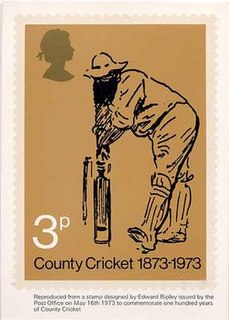
PHQ cards are postcards issued by the British Post Office depicting the designs of their commemorative stamps. They are generally available to buy in main post offices about two weeks prior to the release of each new set of stamps.
The United Kingdom, known in philatelic circles as Great Britain, released many commemorative stamps in the 1970s.
The United Kingdom, known in philatelic circles as Great Britain, released many commemorative stamps in the 1980s.
A list of Great Britain commemorative stamps 2000–2009:
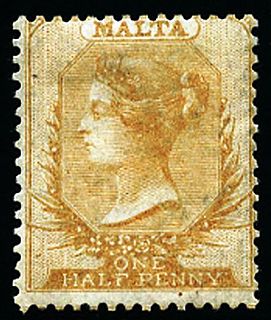
The postal history of Malta began in the early modern period, when pre-adhesive mail was delivered to foreign destinations by privately owned ships for a fee. The earliest known letter from Malta, sent during the rule of the Order of St John, is dated 1532. The first formal postal service on the islands was established by the Order in 1708, with the post office being located at the Casa del Commun Tesoro in Valletta. The first postal markings on mail appeared later on in the 18th century.

The Postal Union Congress (PUC) £1 stamp is one of a series of postage stamps of Great Britain issued in 1929. It is one of the classics of British philately and has been described as one of the most beautiful British stamps ever issued. The stamp was only the second British commemorative stamp to be issued. The first were the British Empire Exhibition postage stamps of 1924–25.
This is a list of Great Britain commemorative stamps 2010–2019
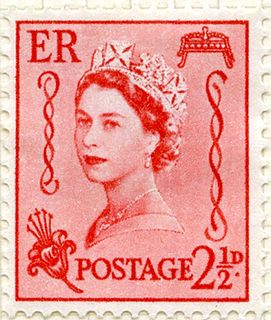
The first postal service took place using mail sent with captains of packet ships, using agents in the England and in the islands for the end delivery. The cost was normally 3d. The first pillar boxes in Britain were introduced in the Channel Islands as an experiment in 1852, to collect mail for the Royal Mail packet boats. The oldest pillar box in use in the British Isles is in Guernsey.
This is a list of Great Britain commemorative stamps 2020–2029